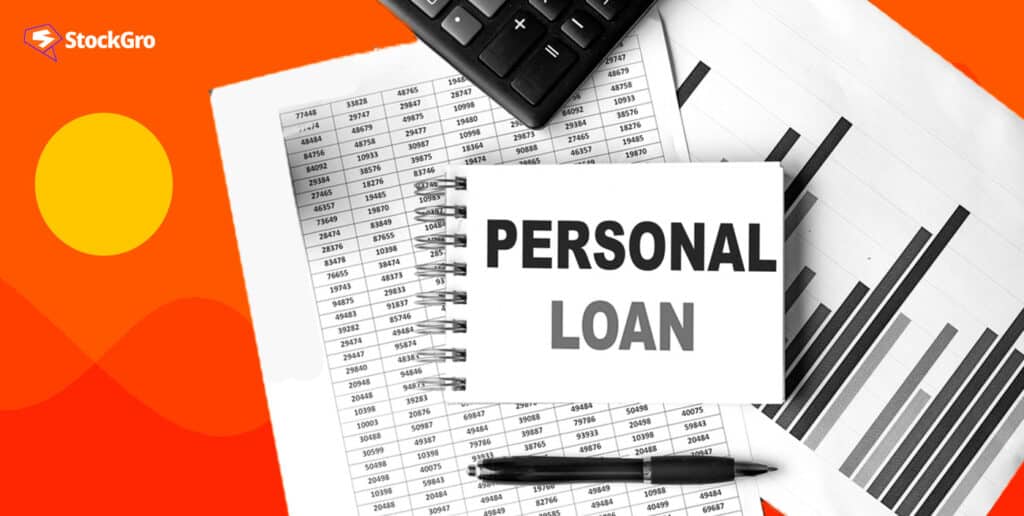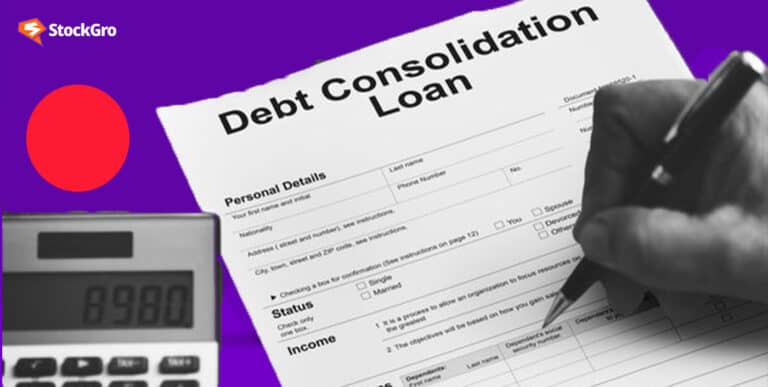
When finances are tight, a personal loan can provide a much-needed cash boost without requiring collateral. Personal loans offer convenience and flexibility for a range of purposes, including debt consolidation, managing unforeseen expenses, and achieving personal goals.
But a common question that comes up is, “How much personal loan can I get on a 25,000 salary?” or “What about a personal loan below 15000 salary? These questions draw attention to loan eligibility based on income. To find answers and understand how your salary influences the loan amount you can secure, keep reading this blog.
Advantages for salaried to apply for a personal loan
Salaried people might gain from applying for a personal loan because there are a number of benefits that are tailored to their steady income. Using a personal loan EMI calculator can also help salaried individuals estimate monthly payments and plan better. Listed below are a few main advantages:
- Simple eligibility criteria: To facilitate the application process, personal loans for salaried workers typically have simple qualifying standards that centre on age, nationality, monthly income, and type of employment.
- Substantial loan amounts: Salaried workers have access to high loan amounts, giving them the extra cash they need for unforeseen costs or crises.
- Competitive interest rates: For salaried workers, the interest rate is influenced by a number of factors, such as income and credit score, with lower rates typically being associated with better credit.
- Overdraft facility: For customers with high disposable income and great credit scores, some lenders offer an overdraft facility, giving them more financial flexibility.
- Flexibility of use: Personal loans allow for a broad range of uses, such as financing significant life events or debt consolidation, since they impose no restrictions on the use of the borrowed money.
Eligibility criteria for a salaried person
Eligibility criteria for a personal loan for salaried individuals include some common benchmarks across various lenders, although specific requirements can differ. Here are the key criteria:
- Age limits: The age range for salaried individuals should be at least 21. This range ensures that the borrower can repay the loan in the specified amount of time.
- KYC documentation: A photograph, identification verification (such as a PAN card, Aadhar card, or passport), and address verification (such as an Aadhaar card, passport, voter ID, or driver’s licence) are required of all candidates.
- Minimum income requirement: Although it varies from lender to lender, there is typically a minimum income requirement that guarantees the borrower has enough money to manage loan repayments.
- Work experience: Lenders often require salaried applicants to have a certain period of work experience. Generally, at least between 2 years plus 6 months for early salary personal loan, indicating stable employment.
- Net salary consideration: The net salary, or take-home income after deductions for things like insurance premiums, statutory payments, and loan instalments, is how banks determine loan eligibility. When determining the net salary required to qualify for a loan, variable pay and benefits like medical and leave travel allowances (LTAs) are typically excluded.
Also read: The concept of EPF – All you need to know about this tax-saving fund
Factors affecting personal loan
How much personal loan can I get on my salary largely depends on various factors, although these can vary. Even if you’re employed, the following standard factors always influence your loan eligibility and amount:
- Credit score: With or without salary personal loan, credit score is a decisive factor. A higher credit score, usually 700 or above, indicates better creditworthiness, which has a major impact on loan approval and amount.
- Debt-to-income ratio: This shows how much of your monthly income is being used to pay off debt. A smaller ratio reduces your financial risk to lenders, which may enable you to get a larger loan.
- Employment history: Work stability influences your loan eligibility and amount by reassuring lenders of your ability to repay.
- Bank statements: A strong financial profile may be seen in statements from the previous three to six months, which increases your chances of receiving a larger loan amount.
- Current liabilities: The amount of a loan you can borrow may be lowered by current debts and financial responsibilities because they have an effect on your total financial situation.
Also read: Mastering the maze: Your pathway out of student loan debt
How much personal loan can I get on my salary?
Your ability to obtain a personal loan based on your earnings is determined by a number of factors that are evaluated differently by each lender. But here are some typical computation techniques:
- Multiplier method: Using this strategy, you take your net monthly pay and multiply it by a value that might be anywhere between 10 and 28. The precise multiplier that is applied may vary based on your pay and the reputation of your company. For instance, assuming a multiplier of 25, if you make ₹40,000 a month and have no other monthly obligations, you may be qualified for a loan of up to ₹10 lakhs.
- Fixed obligation to income ratio (FOIR): After deducting pre-existing liabilities like rent and other EMIs, lenders determine what percentage of your net income is available for EMIs. How much of your income is already obligated is taken into account when adjusting the loan amount.
- Instalment to income ratio (IIR): It is a ratio used by lenders to assess your ability to repay a loan. It shows the portion of your monthly gross income that can be used to pay back loan instalments. An acceptable IIR ranges from 33.33% to 40%, according to banks. This implies that if your gross monthly income is ₹80,000, for instance, you can be qualified for a loan as long as the monthly payment doesn’t go above ₹32,000 (40% times your gross monthly income).
You may also like: Want to be debt-free soon? Here are some strategies to manage your debts!
Bottomline
When considering a personal loan, it’s essential to understand how lenders evaluate your application. They look at your income, credit score, and existing debts. The amount you are able to borrow is influenced by these factors. Because personal loans are unsecured and don’t need collateral, lenders will be even more interested in your financial profile.
For someone thinking about a personal loan for 15000 salary or an instant personal loan without a salary slip, note that it’s not just about the figure you earn but also how you manage your finances. A good credit score and a low debt-to-income ratio can significantly boost your loan eligibility.
Finding a reputable lender is essential. They provide easy application procedures, competitive interest rates, and transparent conditions. Examine how the loan will fit into your entire financial strategy before applying. By staying within your means, you guarantee that you won’t have to strain your resources to make repayments.

